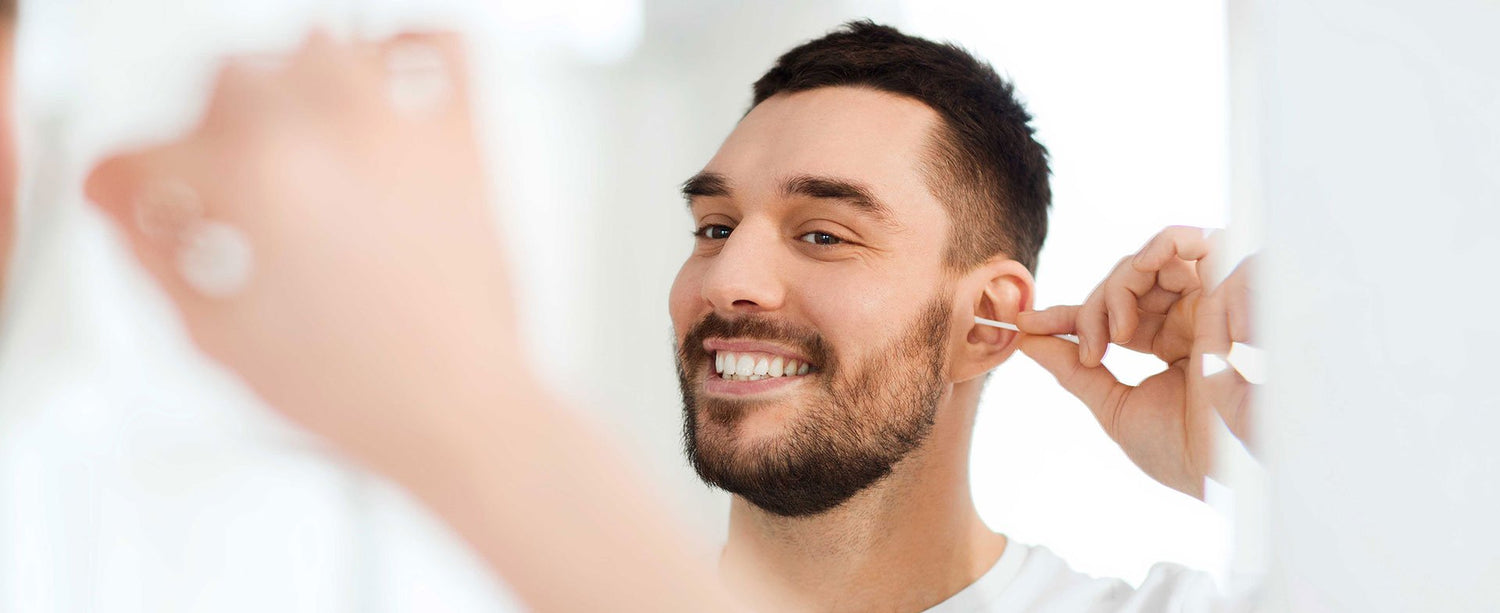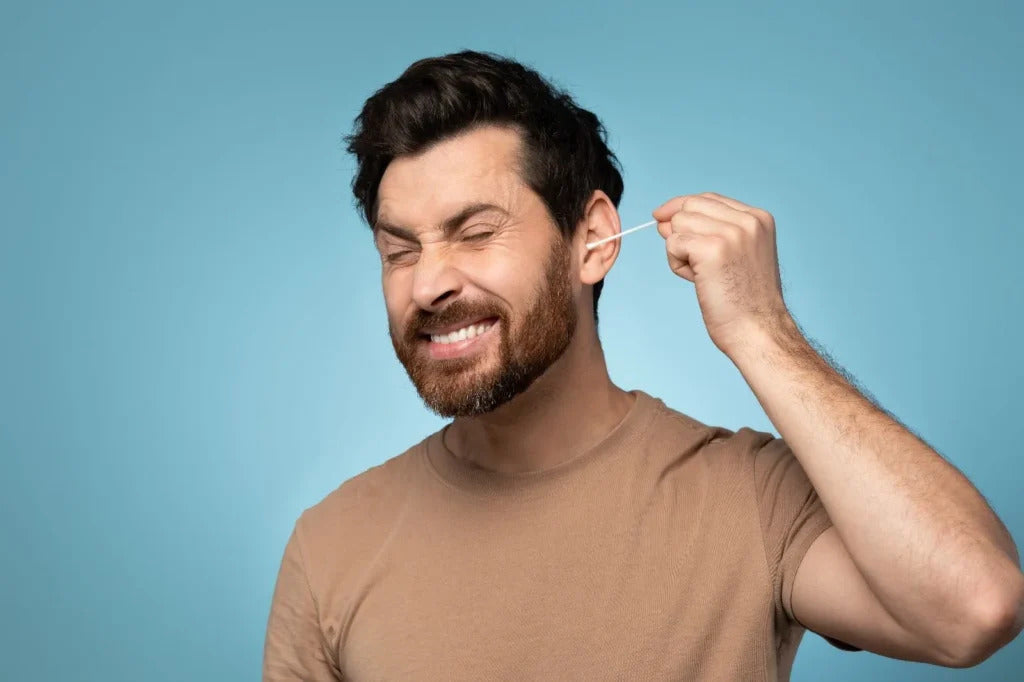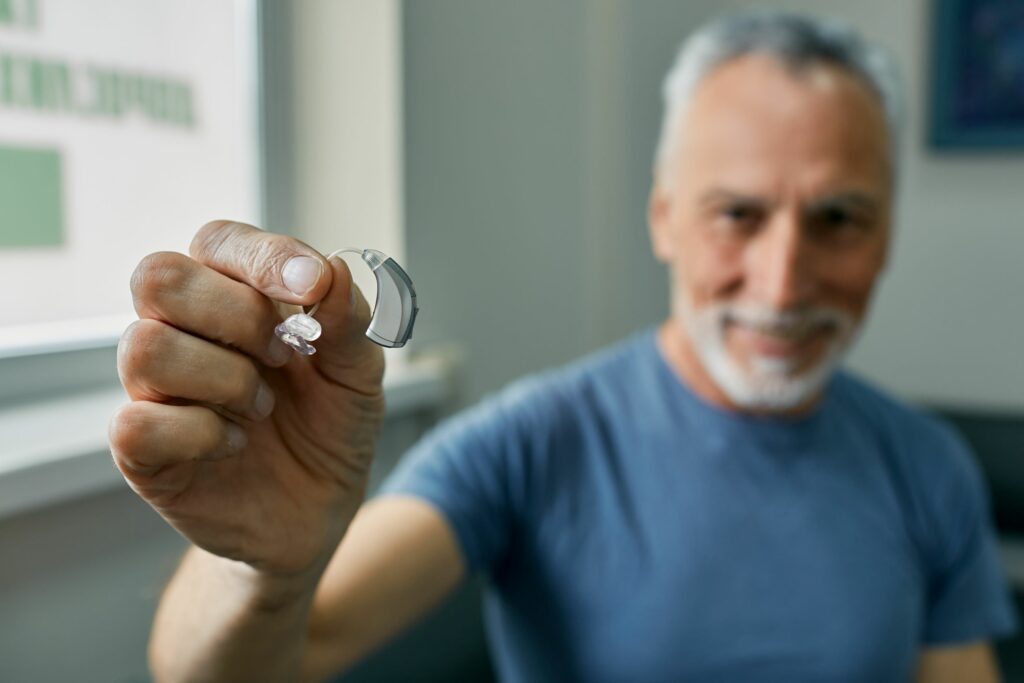When you've been in the hearing field as long as I have, one of the questions that never stops coming up is, "How do I clean my ears properly at home?" It might sound like a simple topic, but trust me—the best way to clean ears is not always what people think.
Over the years, I've seen folks use all sorts of questionable methods—cotton swabs, candles (please don't!), and even hairpins. Ouch. What I want to do today is walk you through how to clean your ears safely, effectively, and comfortably. Along the way, I'll share real stories, common myths, and practical advice—just like I would with a patient sitting across from me.
And if you wear hearing aids like many of my clients do, this is even more important—ear hygiene can make or break your hearing experience. Personally, I recommend Cearvol Diamond X1 Hearing Aids for their comfortable fit and Bluetooth features, but more importantly, they're also easy to clean and maintain—ideal if you're practicing good ear care.
Let's dive into this together—gently, of course.
🚀 Navigate This Post
You may also be interested in:
- Recommended by Hearing Experts! These Cleaning Tools Make Your Hearing Aids Last Longer
- [Updated] How to Get Water Out of Your Ear: Effective Tips in 2025
- Should I Wear My Hearing Aids All the Time? An Expert's Honest Answer
Part 1: Why Ear Hygiene Matters More Than You Think
Keeping your ears clean isn't just about feeling fresh. It's about hearing clarity, avoiding infections, and making sure nothing interferes with your hearing aids or ear health. You'd be surprised how often I meet people who think their hearing has declined—only to find that built-up wax was the real culprit.
Now, I'm not saying you need to scrub your ears daily. In fact, how to properly clean ears means knowing what not to do just as much as knowing what to do. So let's get into it.
1. Why Cotton Swabs Aren't the Best Way to Clean Ears
I get it. We've all seen them. Cotton swabs are practically synonymous with ear cleaning. But here's the kicker: they usually push wax deeper. This can cause blockages, reduce hearing, and in some cases, lead to infections.
Instead, think about gentler methods—ones that don't involve inserting anything into your ear canal. We'll get to those shortly.

2. What's the Best Way to Clean Your Ears at Home?
If you're wondering how to clean your ears at home, the safest method involves warm water, a soft cloth, and maybe some over-the-counter drops. More on that in Part 2.
Oh—and if you ever cough when you clean ears, don't worry—that hasty cough reflex is pretty common thanks to a little nerve in the ear canal. Here's a helpful link on that: cough when you clean ears.
Part 2: Step-by-Step Guide to Clean Ears at Home Safely
So, what's the safest and most effective way to clean your ears at home? Here's how I guide patients—gently, scientifically, and reliably.
1. Warm Water Rinse
Start during a shower: let warm (not hot) water flow near the entrance of your ear canal—it helps loosen soft wax. Tilt your head to the side to allow water to enter and exit naturally. This simple step is a great foundation for how to clean ears without poking around.

2. Soft Cloth for the Outer Ear
Earwax often works its way out on its own. Simply use a damp, clean cloth to gently wipe the outer ear. That's how you clean your ears properly without risking harm.

3. Mineral Oil or Baby Oil Softening (WITH CAUTION)
Here's a well-supported method: to soften hard or dry wax, consider using a couple of drops of mineral oil or baby oil—but only if your eardrum is intact, and you have no infection or fluid discharge. Both the Mayo Clinic and American Academy of Otolaryngology's clinical guidance recommend this approach for healthy individuals.
How to Use It Safely:
- Slightly warm (not hot) the oil.
- Using a clean dropper, place 1–2 drops into your ear, then tilt your head to let the oil sit for 5–10 minutes.
- Tilt your head the opposite way to allow it to drain onto a tissue, and gently dry the outer ear.

⚠️ Important Safety Notes:
- Do not use this if you have a perforated eardrum, active ear infection, or fluid drainage.
- For babies or toddlers, never try this without consulting a pediatrician—learn more about how to clean baby ears safely elsewhere in this guide.
This wax-softening ritual works wonders—especially if you use hearing aids. A clean ear helps your device perform better. Don't forget to pair it with our guide on how to clean hearing aids for full-circle care.
Part 3: Special Care for Babies and Sensitive Ears
I often get calls from worried new parents asking, "How to clean baby ears safely?" First of all—breathe. Babies don't need regular ear canal cleaning.
1. Gently Wipe the Outer Ear
Use a damp, soft cloth and gently clean around the outside. That's enough. Their ears have self-cleaning mechanisms just like adults.

2. Never Insert Anything Into a Baby's Ear
No swabs, no sticks, no fingers. Their ear canals are tiny and sensitive, and inserting anything can cause damage or even push wax further in. If there's visible buildup, your pediatrician can guide you safely.
Part 4: The Hydrogen Peroxide Question
A common DIY method I hear is: "Can you use hydrogen peroxide to clean your ears?" Short answer—yes, but carefully.
1. Dilute Before Using
Use only 3% hydrogen peroxide, diluted with water (equal parts). Apply a few drops into the ear, let it sit for 5 minutes, then tilt your head and let it drain. You might hear a bubbling sound—that's normal.

2. Don't Overuse It
Limit this to once every few weeks, and don't use it if you have an ear infection, tubes, or a perforated eardrum.
Part 5: Knowing When to See a Professional
Even with the best care, there are times when it's better to leave it to the pros.
1. Symptoms to Watch For
If you experience pain, discharge, dizziness, or hearing loss, don't self-treat. These might be signs of infection or impaction.

Diamond X1 - Best Hearing Aids with Bluetooth
Newcomer Price
$249.99 $309.99
- ✔ Adaptive sound modes for clear hearing.
- ✔ Bluetooth for calls & streaming.
- ✔ App-controlled, customizable adjustments.
- ✔ Rechargeable & fast charging.
- ✔ Ideal for mild to moderate hearing loss.
2. Routine Check-Ups Help
A simple visit to your audiologist or doctor once or twice a year can ensure your ears—and hearing aids—are functioning optimally. And it may save you from larger problems later. Check out this helpful article on Bluetooth hearing aids and how they save money to learn more about how small steps now prevent big costs later.
Part 6: Final Thoughts—Clean Ears, Clear Sound
Whether you're managing your hearing health or helping a loved one, learning how to clean your ears at home is a small effort with big impact. Done correctly, it enhances comfort, prevents issues, and ensures your hearing aids work at their best.
It's about more than hygiene—it's about quality of life.
Got questions or looking for devices that support a cleaner, clearer hearing experience? Take a look at the Cearvol Diamond X1—just one example of how thoughtful design meets hearing needs.
Stay curious, stay clean, and as always—happy hearing.




コメントを書く
全てのコメントは、掲載前にモデレートされます
このサイトはhCaptchaによって保護されており、hCaptchaプライバシーポリシーおよび利用規約が適用されます。